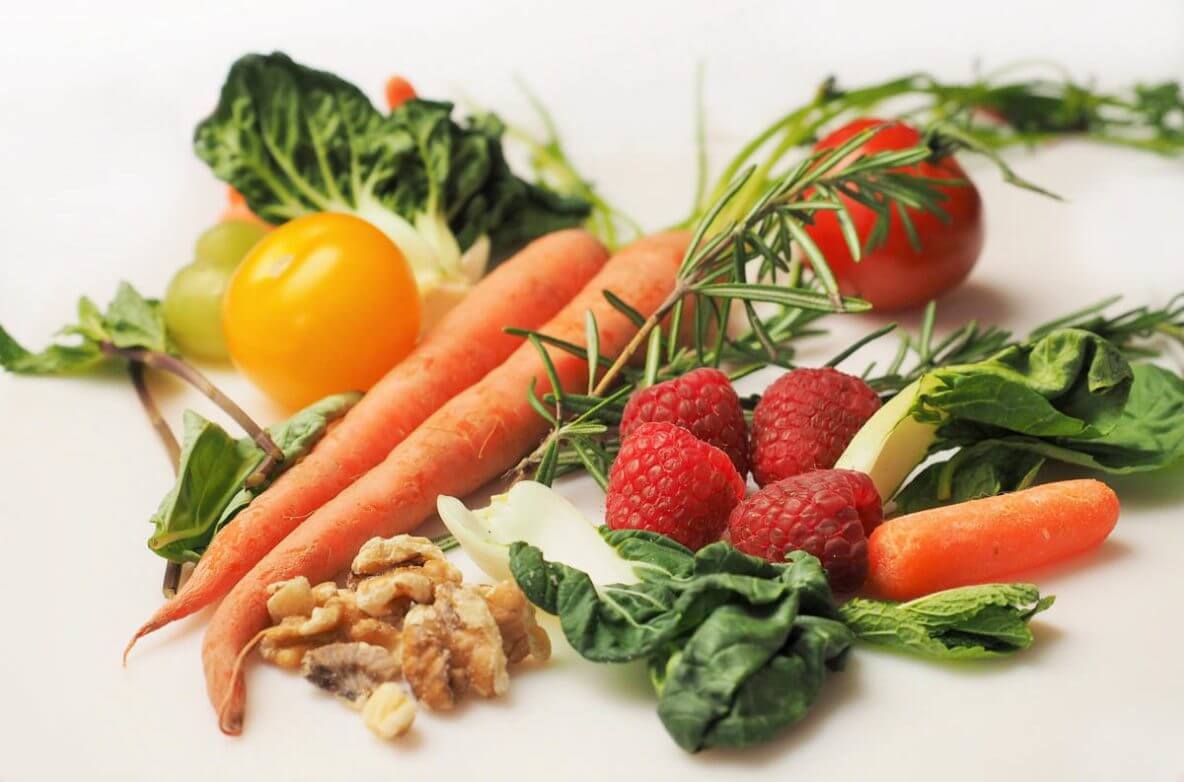
Inhaltsverzeichnis
Wie du Lebensmittelabfälle reduzieren kannst
Ein Drittel der in Deutschland produzierten Lebensmittel landen im Müll. Pro Person kommt man dabei auf 150 g Lebensmittelabfälle pro Tag. Das sind erschreckende Mengen. Natürlich landet dabei nicht nur das Essen im Müll, sondern auch eine Menge Geld…
Ich weiß nicht wie es dir damit geht, aber ich werde immer richtig sauer wenn ich bei anderen Menschen sehe, was sie alles wegschmeißen. Übriggebliebenes Essen, auf das man einfach keine Lust mehr hat? Ein Apfel mit braunen Dellen? Ein Joghurt, der gestern das Mindesthaltbarkeitsdatum erreicht hat? All das landet im Müll, obwohl man es noch hätte essen können. Wahrscheinlich liegt das an der Bequemlichkeit der Menschen. Und mit Sicherheit spielen auch Ignoranz und Unwissenheit mit rein. Denn wie schädlich Lebensmittelabfälle für die Umwelt sind, ist vielen nicht bewusst.
Wieso schaden Lebensmittelabfälle der Umwelt?
Lebensmittel machen 20% der festen Abfälle auf Deponien aus. Als organische Stoffe können sich dort jedoch nicht zersetzen, weil sie eingeschlossen sind. Die Lebensmittel sind von lauter non-organischen Stoffen umgeben, sodass eine Zersetzung nicht möglich ist. Außerdem gibt es auf den Mülldeponien nicht genug Luft, die den Zerfall unterstützen könnte. Stattdessen setzen die organischen Stoffe Methan frei, dass – wie wir alle wissen – stark zum Klimawandel beiträgt.
Was wird weggeschmissen?
Zunächst einmal ist zu sagen, dass fast alles von dem, was weggeschmissen wird, noch essbar ist. Denn nicht Verdorbenes macht den Großteil unserer Lebensmittelabfälle aus, sondern die Dinge, die uns nicht mehr appetitlich oder gut genug erscheinen.
Besonders häufig betrifft das Obst und Gemüse. Gerade das, was einen so wichtigen Bestandteil unserer Nahrung bildet! Leider wird es bei falscher Lagerung schnell unansehnlich und landet somit oft im Müll.
Auch Speisereste, Brot, und Backwaren machen einen großen Teil (30%) der Lebensmittelabfälle aus. Mit 9% sind Milchprodukt-Abfälle übrigens deutlich seltener als Obst- und Gemüse-Abfälle, die 34% ausmachen.
Tipps zur Vermeidung von Lebensmittelabfällen
Mache eine Bestandsaufnahme
Wie oft geht man (spontan) einkaufen, ohne vorher bei sich zuhause in den Schränken nachzusehen, was man noch hat? Es hilft außerdem, sich vorher Gedanken darüber zu machen, was man die Woche über essen möchte. Dann kauft man gezielter ein und weniger Lebensmittel werden schlecht. Heißt weniger Abfälle…
Brauner Fleck = verfaulter Apfel?
Ein kleines bisschen “Fäulnis” wird einen nicht umbringen. Wenn ich sehe, dass meine Kartoffeln, Tomaten oder Äpfel eine braune Stelle haben, schneide ich das betroffene Stück einfach heraus. Der Rest lässt sich ohne Probleme verwenden.
Übrigens gilt das auch für Avocados: Hier gilt die weit verbreitete Annahme, eine Avocado sei ungenießbar, sobald sie leicht braune Stellen hat. Erst wenn man Schimmel entdeckt, sollte man auf den Verzehr verzichten. Die braunen Stellen entstehen nämlich vor allem durch Oxidation.
Bei Milch und Fleisch sollte man jedoch vorsichtiger sein und schimmelige Produkte ganz entsorgen. Aus diesem Grund ist es sinnvoll, sich vor dem Kauf zu überlegen, wie und wann man die Lebensmittel, die schnell schlecht werden, verwerten und essen möchte.
Weniger Kaufen
Kennst du das? Man geht in den Supermarkt oder auf den Markt, um ganz bestimmte Ding zu kaufen – und am Ende ist der Einkaufskorb mal wieder völlig überfüllt? Mir passiert das vor allem wenn ich hungrig einkaufen gehe… Das ist nie eine gute Idee.
Wir kaufen häufig mehr, als wir rechtzeitig verbrauchen können. Kaufe weniger ein, auch wenn du zunächst denkst du kaufst zu wenig – meist endet man dann mit genau der richtigen Menge. Man kann immer noch Dinge nachkaufen, wenn man merkt, dass man zu wenig hat. Aber man kann nicht das rückgängig machen, was man bereits gekauft hat.
Wir alle haben die heimliche Angst, nicht genug Essen zuhause zu haben, und tendieren deswegen dazu, zu viel zu kaufen. Hinzu kommt, dass Supermärkte ziemlich gut vermarkten können. Man wird dazu verleitet, mehr zu kaufen, ohne dass es einem direkt bewusst wird.
Also beobachte dich selbst beim Einkaufen und kaufe weniger als du erstmal möchtest!
Verwende deine Speisereste weiter
Oftmals gelangen Speisereste in den Biomüll oder auf den Kompost, die man noch hätte weiterverwenden können. Dazu gehören beispielsweise Karotten- und Kartoffelschalen, Die Haut von Zwiebel und Knoblauch oder Spitzen von Lauch und Sellerie. Damit lassen sich Gemüsebrühen und Gemüsechips machen oder anderes Gemüse einlegen. Im Internet findet man lauter Ideen zur Weiterverwendung von Lebensmittelresten!
Bevor wir diese also das nächste Mal einfach in die Tonne werfen können wir uns fragen, ob es noch Möglichkeiten gibt, die Reste weiter zu verwenden…
Nutze die Möglichkeiten deines Gefrierfachs
Wenn man bemerkt, dass gewisse Dinge langsam schlecht werden oder dass man sie wohl nicht rechtzeitig verarbeiten kann, lohnt es sich, diese Lebensmittel einzufrieren. Die meisten Obst- und Gemüsesorten lassen sich einfrieren. Gefrorene Bananen und gefrorene Zucchini machen sich beispielsweise super in Smoothies! Auch hier gibt es zahlreiche Möglichkeiten der Weiterverarbeitung von eingefrorenen Lebensmitteln.
Auch übriggebliebenes Essen wie fertig gekochte Gerichte lassen sich häufig für mehrere Monate einfrieren.
Mein Gefrierfach ist recht klein. Vielleicht liegt es daran, dass ich manchmal vergesse, dass ich es habe… Dabei hilft es uns sehr bei der Reduktion von Lebensmittelabfällen!
Einmal zubereiten, mehrmals genießen
Manchmal ist man so beschäftigt damit, all die verschiedenen Gerichte zuzubereiten, die man sich vorgenommen hat, dass man mehr Lebensmittel verschwendet als notwendig. Und manchmal kommt einem etwas dazwischen oder man verschiebt seine Pläne. Man isst auswärts, wird eingeladen oder hat nicht mehr genug Zeit zum Kochen.
Deswegen ist es sinnvoll, einmal zu kochen oder Gemüse vorzubereiten, und es dann mehrmals essen zu können. Ich als Ein-Personen-Haushalt koche gerne mehrere Portionen auf einmal. Die erste Portion esse ich abends, die zweite nehme ich am nächsten Tag mit zur Uni.
Wenn man einmal dabei ist, Paprika zu schneiden und weiß, dass man in den nächsten Tagen eh nochmal welche für Wraps braucht, dann kann man direkt die gesamte Paprika schneiden. Wenn man dann die Wraps vorbereiten möchte ist man froh für die getane Arbeit im Voraus.
Man kann also einfach versuchen, es einfach zu halten. Das bedeutet nicht, dass man eine ganze Woche lang nur ein Gericht essen soll. Aber man kann sich überlegen, wie man clever und simpel Kochen kann und trotzdem Abwechslung hat.
Zu Beginn erfordert jede neue Gewohnheit Kraft und Ausdauer. Alles scheint viel aufwändiger und komplizierter zu sein. Doch probiert man den ein oder anderen hier genannten Tipp einige Male aus, geht es schon bald wie von selbst. Das eigene Bewusstsein und die eigene Haltung dem Essen und den Abfällen gegenüber verändert sich. Und man kann guten Gewissens sein, damit zum Klimaschutz beizutragen!






























Leave a comment
This site is protected by hCaptcha and the hCaptcha Privacy Policy and Terms of Service apply.